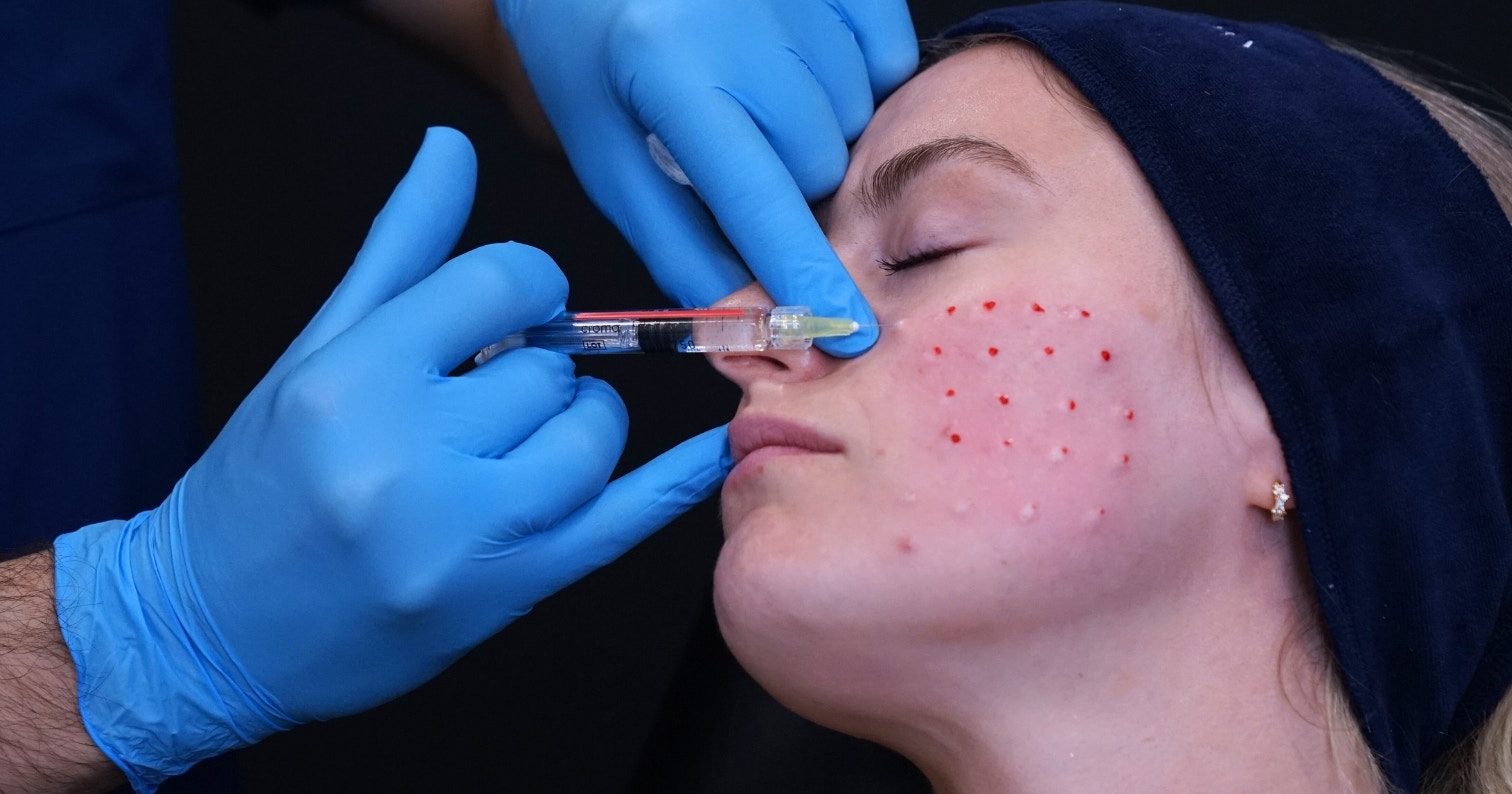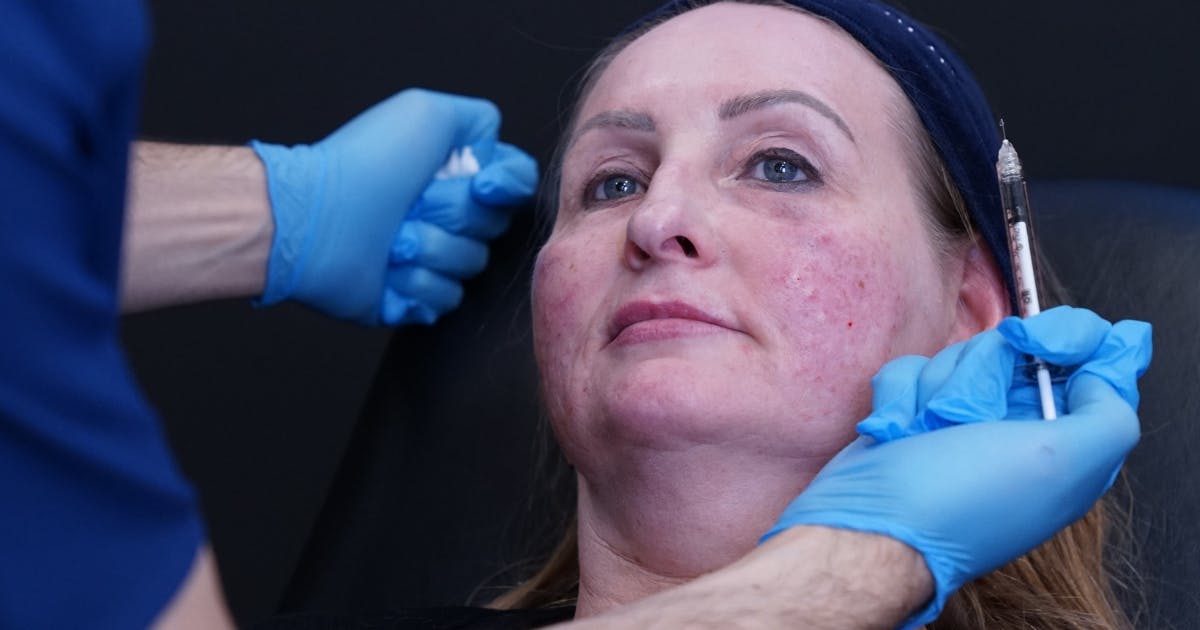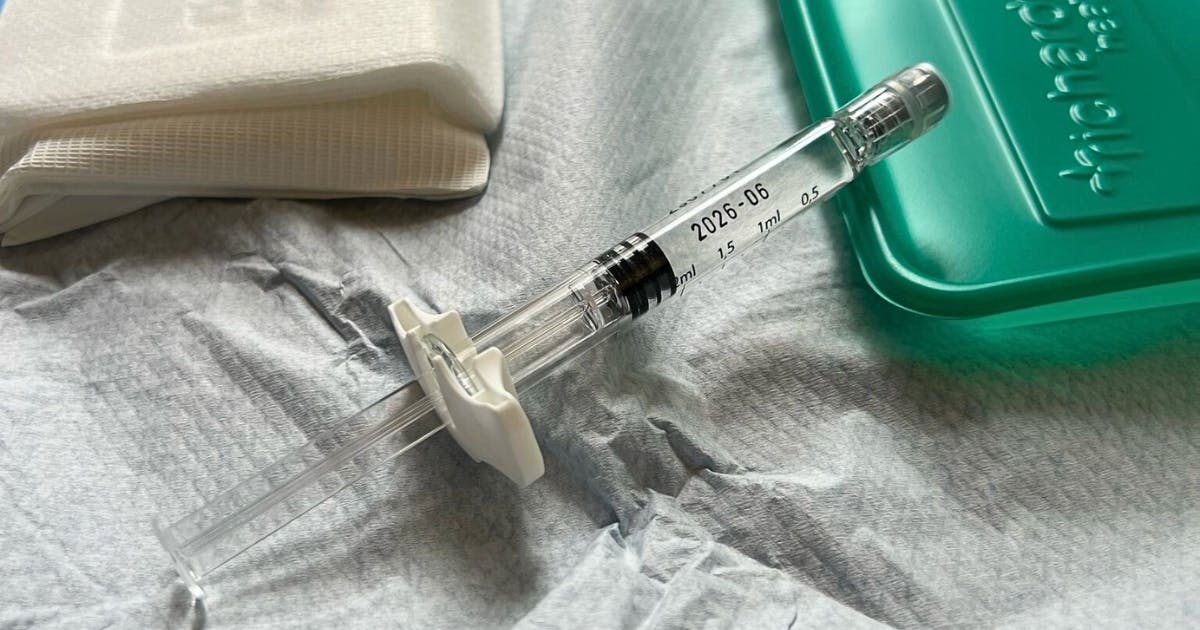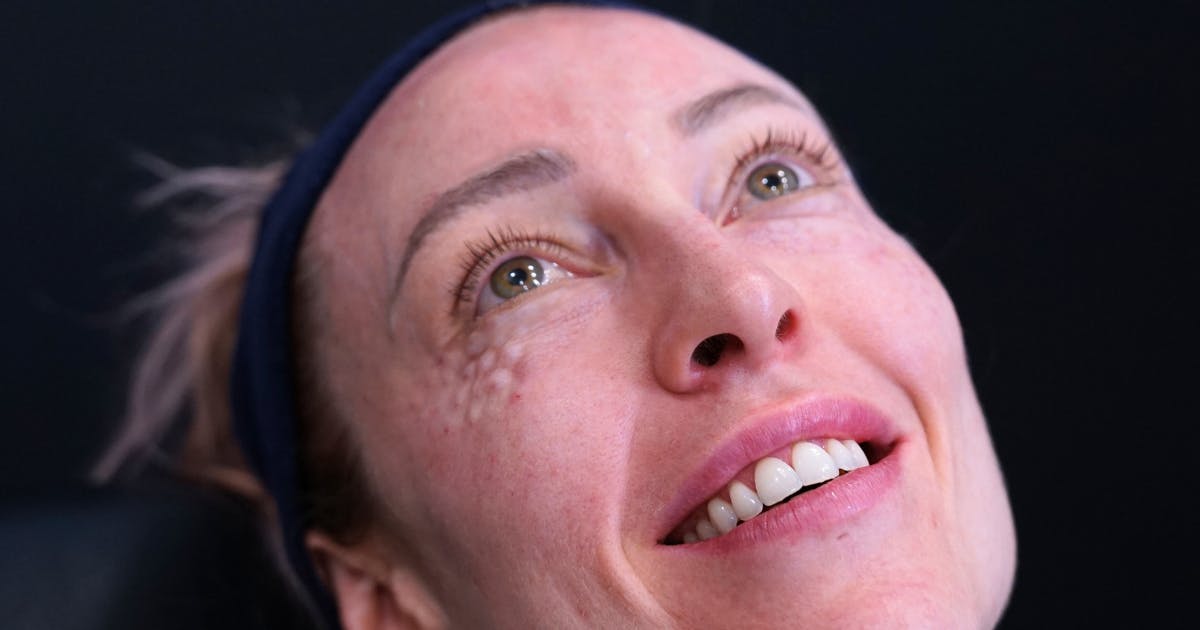A Practitioner’s Guide to Polynucleotide Skin Boosters

If you’ve heard about polynucleotide skin boosters but are unsure of what they are, here’s our aesthetics practitioner’s guide.
Harley Academy clinical trainer and aesthetics specialist, Dr Lindsay Jones breaks down everything you need to know about this cosmetic dermatology treatment.

What are polynucleotides and where are they used?
Dr Lindsay explains, “To understand what polynucleotides are, we have to return to basic biochemistry. Nucleotides are organic molecules made up of sugar, phosphate and a nitrogen-containing base. When these are grouped in a chain, they form a polynucleotide, for example, DNA and RNA.
“They have been utilised in the biomedical sphere for gene therapy, DNA sequencing, intra-articular joint restoration, scar revision, as well as experimentally in cancer and inflammatory bowel conditions before their application in the aesthetics arena.
“Different polynucleotides can stimulate dermal fibroblasts, adipocytes and osteoblasts and depending on their design, improve skin, fat, and bone function. Overall, they improve skin hydration, have antioxidant action, and improve collagen and elastin within the skin.”
The difference between polynucleotides and HA fillers
“Polynucleotides used in aesthetics are generally derived from fish gonads, whereas hyaluronic acid (HA) fillers are usually derived from bacterial fermentation. Thus, polynucleotides cannot be used in patients with fish allergies,” Dr Lindsay warns.
You may also wish to make any vegetarian or vegan patients aware of the treatment’s origin.
She continues, “HA fillers are generally designed to add volume and hydration to tissues, whilst polynucleotides are stimulatory in their mechanism of action.”
Polynucleotide injection techniques for aesthetics practitioners
Dr Lindsay notes, “Each product will have individual treatment protocols depending on the target tissue and these are often brand-specific.
“They are commonly injected with a needle into the deep dermis using a micro bolus technique. You can also use a cannula in the subcutaneous fat layer using a fanning retrograde linear thread technique.”
Most polynucleotide gels licensed in the UK come as pre-filled syringes with no local anaesthetic included.
Which patients would benefit most from this skin booster?
“Generally, older patients who have moderate tissue laxity will benefit the most from these sorts of stimulatory treatments.
“If the tissue laxity and facial volume loss are too extensive then surgical interventions are often a more appropriate choice.
“Younger patients who are just beginning to show the first signs of age-related facial changes can also benefit from polynucleotides. Results for this patient group tend to be less dramatic,” Dr Lindsay clarifies.
Notably, polynucleotides are often used in patients where the skin is thin and lax such as the tear trough area. Patients with fine dermal lines may also benefit.
Common patient selection and product use mistakes
Dr Lindsay states, “As with any cosmetic procedure, patient selection is key to avoid dissatisfaction.”
She highlights three different areas to consider when communicating with your patient in the consultation…
Managing patient expectations
“Underselling and over-delivering is a good principle to adhere to, including setting clear expectations for these treatments. For example, skin booster injectables cannot achieve the same results as a surgical facelift. In this case, practitioners may need to decline treatment if patients have unrealistic expectations.”
Seeing genuine aesthetic results from polynucleotides takes time. This is because fibroblasts take time to activate and start producing collagen and elastin. So clinical change is seen in months, not days.

Communicating treatment cost
“Polynucleotide treatments often require a course of 2-3 sessions about 2-4 weeks apart. Sessions also depend on the specific product protocol and should be followed by regular maintenance doses. So, patients need to be committed to regular treatments and have the budget to maintain the results. This requires honest discussions about budgeting.”
Downtime and side effects of polynucleotides
“Unlike most HA fillers, these products usually don’t contain local anaesthetic. As a result, practitioners may have to do local infiltration of anaesthetic to make it a comfortable experience for the patient,” cautions Dr Lindsay. A local infiltration is also sometimes referred to as a nerve block.
“There is often an initial marked inflammatory response,” she advises. “This can result in redness and swelling over the first few days post-treatment, which patients need to be aware of. There are also all the usual risks of breaching the skin barrier such as bruising, infection and allergic response.
“Overall polynucleotides are bio-stimulatory products designed to rejuvenate the tissues; thus, older patients with moderate tissue laxity tend to be the best candidates.”
Polynucleotide injection techniques: needle vs cannula
Dr Lindsay states, “There have been no formal studies to determine if the needle or cannula technique is more effective.
“Injection technique choice depends on the target area, tissue, and the practitioner's skill level. If the target area is large, it’ll likely be more comfortable for the patient to administer with a cannula. If the target tissue is very superficial or very deep, then a needle may be a better option for more accurate delivery.”
How long do polynucleotide results last vs regular HA filler?
“As with any treatment, the longevity of results is multifactorial including the initial tissue condition, age, genetics, and lifestyle factors.
“Most pharmaceutical companies advise that they expect polynucleotide results to last 6 to 12 months. With HA filler, the results depend on the area and type of filler used. This can vary from 3 to 24 months,” Dr Lindsay highlights.
Level up your aesthetics injectables knowledge and skills
Understanding your patient’s concerns from a holistic standpoint and advising accordingly is all part of the patient care we should be delivering as medical aesthetics practitioners. This requires appropriate theoretical knowledge and practical experience which will build your confidence in knowing when and how to treat. It will also help you to better determine when not treating is the most suitable option.
If you’re looking to build on your existing skin knowledge, our Cosmetic Dermatology Course offers a skin-first approach to aesthetics. You’ll learn the science and techniques of treatments such as microneedling and chemical peels to injectable skin treatments - including polynucleotides.
This can also be undertaken as part of our Combined Level 7 Diploma & Cosmetic Dermatology course. The perfect course for medical professionals who want more comprehensive training, our Combined Level 7 diploma encompasses skin and injectable treatments. Not only will you expand your skill set and aesthetics offering, but you’ll also develop your understanding of how skin treatments can complement filler and botox.
If you're solely looking for a polynucleotides course, check out our Polynucleotides Training Course or chat to our advisors.
To explore which aesthetics training pathway best suits your career goals, book a free advisory session with our dedicated team.
All information correct at the time of publication
Download our full prospectus
Browse all our injectables, dermal fillers and cosmetic dermatology courses in one document
By submitting this form, you agree to receive marketing about our products, events, promotions and exclusive content. Consent is not a condition of purchase, and no purchase is necessary. Message frequency varies. View our Privacy Policy and Terms & Conditions
Attend our FREE open evening
If you're not sure which course is right for you, let us help
Join us online or in-person at our free open evening to learn more
Our Partners













STAY INFORMED
Sign up to receive industry news, careers advice, special offers and information on Harley Academy courses and services


